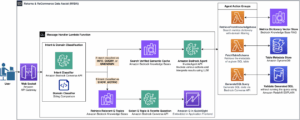In today’s labor landscape, employee training has become an essential benefit that more and more companies are offering to their staff, driven by the high demand for new skills. However, facing the reality of overwork, lack of organization, and difficult work-life balance, many workers have ended up quitting training courses before completing them. This issue is a major concern for both employees and companies, who see these dropouts as a threat to competitiveness and professional growth.
According to the World Economic Forum, by 2027, 60% of workers will need some form of training to stay competitive in the job market. However, a recent report by Cobee, “Employee Benefits Trends Report,” indicates that 33% of employees in Spain lack time for training, even though they would like to do so. The main causes are excessive workload, lack of organization, and difficulty balancing personal and professional life, resulting in a significant dropout from training programs.
This situation poses a considerable challenge for companies, which rely on the continuous training of their employees to maintain competitiveness and relevance in an ever-evolving market. The lack of completion of training by employees can negatively affect productivity and work quality. On the other hand, employees who quit training miss out on the opportunity to acquire essential skills and knowledge, limiting their professional development and potentially increasing their job dissatisfaction.
Cristina Morán, B2B Director at The Valley, emphasizes that “companies should not only offer the possibility of training, but also prevent its abandonment.” Morán highlights the importance of implementing training formats that adapt to both the professional and personal lives of employees, such as online training, modular courses, or programs with flexible schedules. “Ensuring that employees complete their training means having a more qualified team, which can result in increased productivity, innovation, and competitiveness in the market,” Morán points out. She also mentions that well-trained staff are more adaptable to changes and challenges, reinforcing employees’ self-esteem and confidence, and opening up new professional opportunities.
Facing this issue, experts from The Valley, a business school specializing in In Company training, suggest five strategies that companies can implement to maintain engagement and support for their employees, helping them overcome difficulties that could lead them to quit:
- Promote microlearning: Offering training in short and concise capsules allows employees to learn at their own pace and at times that fit their schedule. Flexibility to access content anytime, anywhere is also crucial.
- More personalized learning: Adapting training to the individual needs of each employee maximizes relevance and applicability. Personalized learning paths increase the effectiveness of training and enhance engagement.
- Flexibility in time and resources: Allocating specific hours within the work schedule for training and offering “study days” can ease the pressure of balancing work and learning. Providing adequate resources is also essential.
- Continuous monitoring and support: Regularly tracking employees’ progress and offering proactive assistance helps resolve obstacles quickly. Effective monitoring includes personalized support through mentors, tutors, or additional resources.
- Create a supportive community within the company: Fostering a culture of collaborative learning helps employees feel part of a community that values continuous learning. This can increase motivation and the likelihood of completing training.
With these strategies, companies can not only improve the completion rate of training programs, but also strengthen employee satisfaction and performance, ultimately leading to a more competitive and dynamic business environment in the long run.
via: MiMub in Spanish












